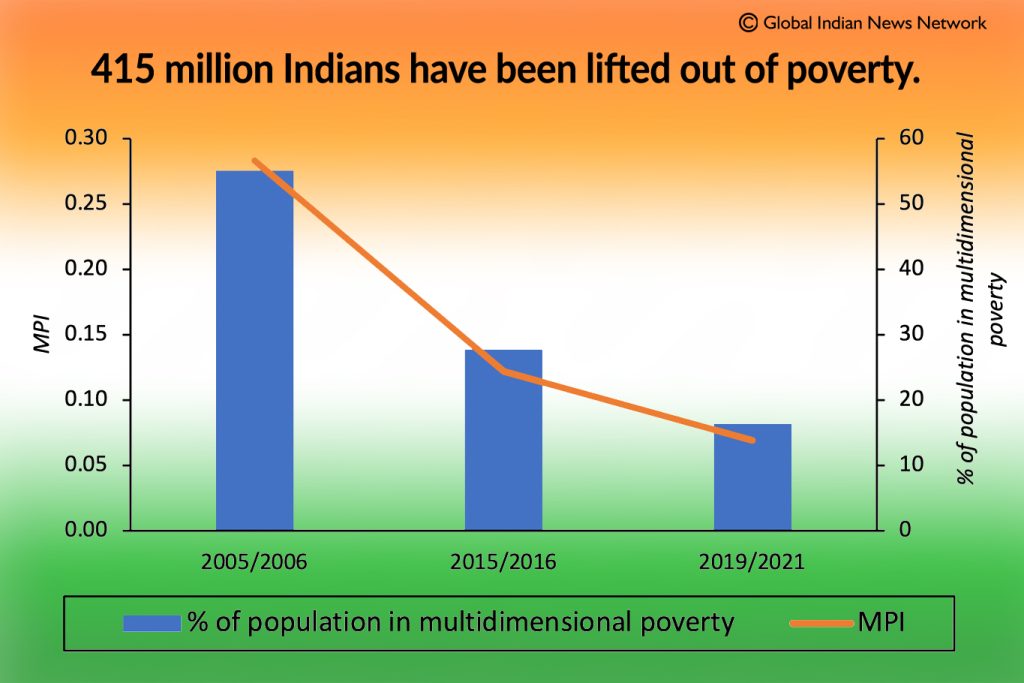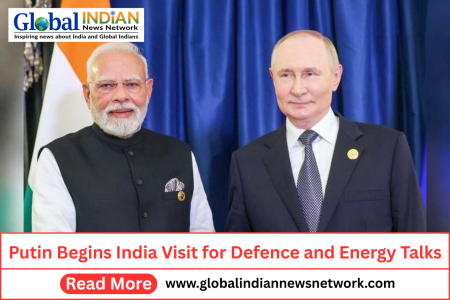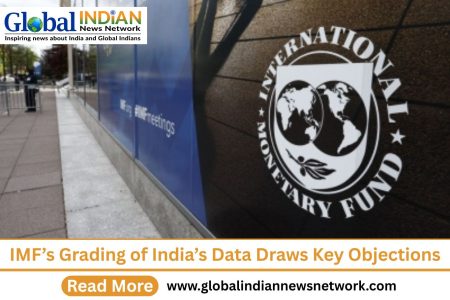
The brilliant impact of ‘Azadika Amrit Mahotsav’ has begun to form the resolution of a poor-free India while establishing a powerful India. Comprehensive plans for the eradication of poverty are included in Prime Minister Narendra Modi and his government’s objectives and aims for the centenary celebrations of independence in the year 2047. In the past, the Modi government’s initiatives to combat poverty have yielded nothing short of miraculous results.
According to research published by the UN Development Program and Oxford University, India has successfully lifted 415 million people out of poverty in the last fifteen years. Certainly, this is good news for India’s economy. Goldman Sachs, a prestigious financial services firm, predicts that by 2075, the Indian economy will have grown to become the world’s second-largest.
The Modi government has made significant attempts to remove the stain of poverty from India’s image over the past nine years by establishing numerous dimensions of development and empowerment and implementing such initiatives for the welfare of the poor. Those below the poverty line have been raised. Despite the fact that 415 Million Indians will have escaped poverty by 2020, India remains the world’s most impoverished nation. India’s economic growth and political stability rest largely on the Modi government’s ambitious poverty reduction initiatives.
The Global Multidimensional Poverty Index (MPI) data from the United Nations Development Programme (UNDP) corroborates this. About 645 million Americans were considered poor according to several measures in 2005–06. The Global Multidimensional Poverty Index estimates that there are currently 230 Million impoverished people in India, a significant decrease from the previous decade.
Two organizations have painted an optimistic picture of India’s economy: one focuses on the country’s current state, while the other looks ahead to its potential. Both images emphasize the importance of New India, Strong India, Developed India, and other similar concepts in becoming the world’s leading economic force. When things are going well, extra care and attention must be given. The widening wealth divide in India is a matter for concern, and it should have been a huge political issue, but it never became one, making for more difficult times. It’s possible that these wealthy individuals are the driving force behind political parties and that continued poverty is their greatest tool for gaining power. It’s a shame the wealthy are getting wealthier while the poor are sinking deeper into poverty. What more compelling problem could the opponent have?
Two recent trends are often cited as causes of the decline in poverty rates. Two major government initiatives that aim to alleviate poverty in India are the Rural Employment Guarantee and the Pradhan Mantri Garib Kalyan, both of which provide large sums of cash and fuel subsidies, respectively. The Anna and Ujjwala Yojana programs The effectiveness of these initiatives in reducing poverty can be evaluated. Such programs have helped many people find work, and the money they earn from their earnings goes directly toward alleviating their financial hardships. Gas subsidies help families save money on a significant expense. However, decreased food costs translate into more disposable income thanks to the availability of free food.
Making a new, powerful India doesn’t require concentrating wealth in the hands of a select few; rather, it requires allocating resources in a way that makes them accessible to the millions of villages and hundreds of millions of people who live across the huge country. And that is exactly what the Modi Government is doing with their various programs.












